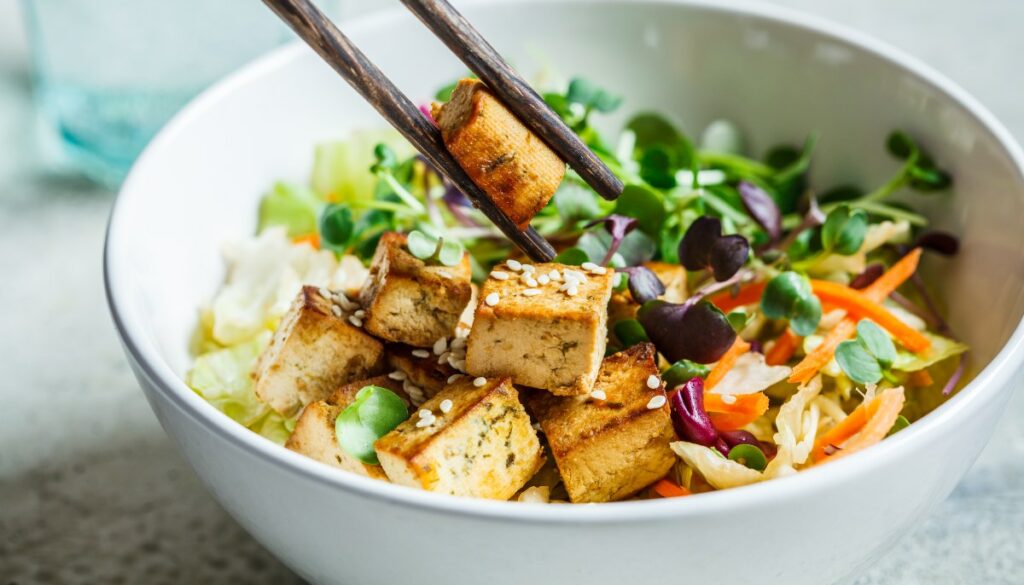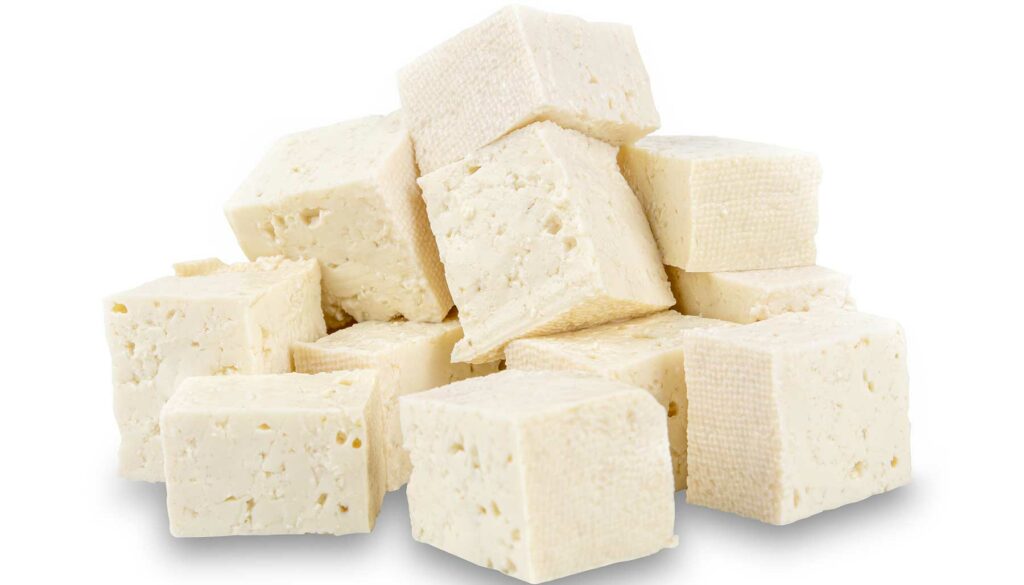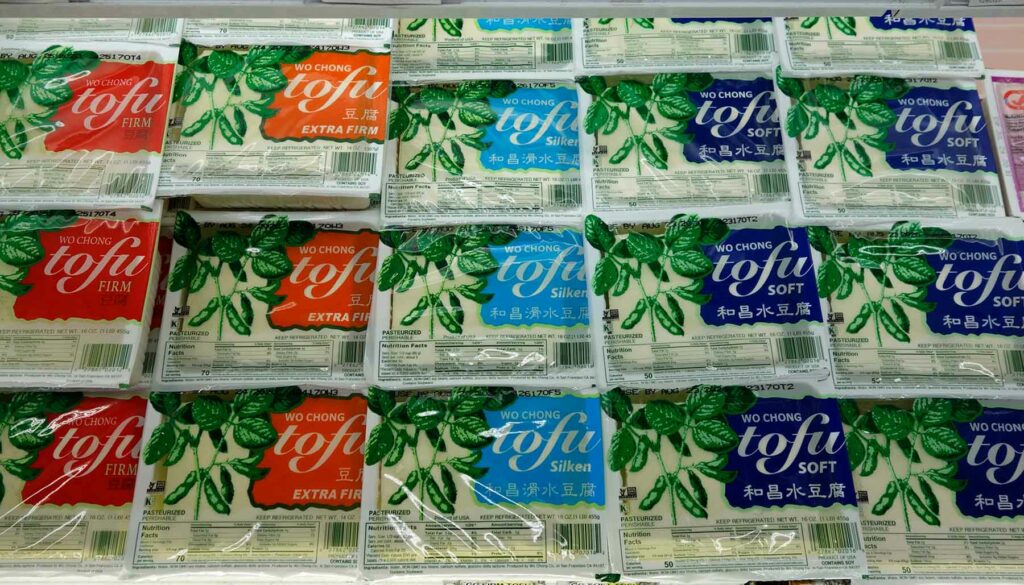By now, it’s likely that you’ve encountered tofu a time or two. With the rise in popularity of vegetarian and vegan diets, tofu has started to sneak its way onto more store shelves and even in restaurant menus.
I won’t judge you if you scoffed at it the last time you spotted it as a new menu item at your favorite restaurant.

However, I do think you should give tofu a fair chance! While it gained quite a reputation for being a watery, flavorless square – thanks to many years of people not knowing how to treat it – I’m here to tell you that the stuff can be really tasty. Not only do I cook a mean tofu dish, but I’ve had some amazing tofu in restaurants, too.
While tofu may seem like the hip new thing thanks to the rising popularity of vegetarian and vegan diets in the United States, it has been around much longer than you might think. Although tofu in the United States really only started taking off around the 1970s, making tofu was first recorded around 2000 years ago during the Chinese Han dynasty. After that, it became an important staple in many Asian countries, including Korea, Vietnam, and Thailand.
And it isn’t just delicious, either. It’s actually got plenty of health benefits. Of course, the health benefits can basically be canceled out by how it’s prepared, thanks to pesky (but delicious) ingredients that aren’t all that great for us. Add too much sodium or sugar to the dish, and you’re not eating as healthy as you thought you were. (I’m about to give you a bomb tofu recipe that includes both of these but I promise it’s not too much!)
Anyway, tofu itself is pretty good for you. Forget all the rumors about soy boys or whatever, because it’s all a myth.
But First, a Word on Organic and Low Fat Tofu Options
If it’s within your budget, I do recommend picking up organic tofu when possible and also avoiding any tofu labeled as low fat or fat-free. Genetically modified foods (GMOs) aren’t allowed in organic products. By picking up the organic tofu, you know you aren’t picking up food made with genetically modified soybeans.
As for low-fat and fat-free tofu, this stuff can possibly be made with hexane – the food industry’s dirty little secret. Hexane is a solvent made from crude oil, and it is sometimes used in food production. While regular tofu is made with whole soybeans, which are not hexane-extracted, the low fat and fat-free varieties may use hexane-extracted soy.

The Health Benefits of Tofu
Now that we’ve gotten that out of the way, let’s talk about the health benefits of chowing down on tofu!
Did you know that tofu is a plant-based source of complete protein? Not all plant-based sources of protein are created equal. Tofu is actually a complete protein source. That means that it actually provides all nine of the essential amino acids we need, that our bodies do not produce on their own.
Related: Be a Protein Queen: Plant-Based Ingredients You Should Start Buying
Tofu is also a great source of other key nutrients, including isoflavones. These powerful antioxidants can help minimize the damage from free radicals. They have been studied for their cancer prevention properties, among other things. Foods containing isoflavones may reduce the risk of cancer, diabetes, and even heart disease. Studies suggest that foods rich in isoflavones have been linked to reduced cholesterol levels.
You will find that tofu is packed with iron. In fact, it contains about as much – if not more – than our average serving of red meat. Plus, tofu provides calcium, too. Traditionally, regular tofu already contains more calcium than your average milk. If that isn’t enough, though, some manufacturers even add more calcium, boosting the amount even higher. This means that tofu has the added benefit of reducing bone loss and increasing bone density.
Of course, tofu is also naturally low in calories and gluten-free. It does not contain cholesterol, either. This is great news for people with dietary restrictions, and it makes tofu a heart-healthy choice. This is on top of tofu’s already heart-healthy reputation thanks to the isoflavones that I already mentioned.

Okay, But Tofu is the Cheaper Option, Too
I know that cost isn’t necessarily a health-related benefit, but it’s worth mentioning. Besides, maybe saving a few dollars may help you feel better about cooking dinner!
Normally, meat is the most expensive part of a meal. Tofu is a cheaper protein source than meat. Per pound, it’s often cheaper than meat products, and it’s usually only slightly more expensive than beans. The actual cost, of course, depends on the store you’re shopping in. But generally, tofu is always the cheaper option.
Making Delicious Tofu 101
Now that we’ve talked about all the benefits of tofu, let’s talk about how to make it tasty!
Tofu can be intimidating if you’ve never cooked it before, but the secret to good tofu is in the prep work. What you do to the tofu before you cook it can really make or break your tofu dish!
For beginners, it is best to start with firm or extra-firm tofu. There are many different kinds out there, but firm, extra-firm, silken, and soft are the ones you will typically find in your local grocery store.

Soft or silken tofu can be used as a substitute for eggs or dairy products. It is good for smoothies and baked desserts, including custard, cheesecake, or mousse. Soft tofu is also great for use in soups.
Firm and extra-firm tofu are much more solid and hold up well during cooking. Because it is sturdy, and it features a much more chewy texture, this is the best place for beginners to start with their first tofu dish. It will withstand pressing, breading, frying, or anything else you throw at it.
Pressing and marinating are key to tasty tofu. That’s because regular, packaged tofu comes packed in water. We want to get a lot of that water out, and then replace it with some flavor. Skipping these two steps will likely leave you with less-than-desirable tofu dishes.
Pressing Tofu
As I mentioned, tofu comes packed in water. That means you’ll need to squeeze out all the excess water so that you don’t end up with something flavorless and water-logged.
- Start with firm or extra-firm tofu. Open up the package, and drain out all of the water.
- Cut the block of tofu width-wise into slices. I like to do 6-8 slices, but you can do it based on how thick or thin you want your tofu to be. However, keep in mind that it’ll be slightly thinner after it’s been pressed.
- Layer a couple of kitchen towels on top of a cutting board, cookie sheet, or tray, and put a paper towel on top.
- Lay the tofu rectangles in a single layer on top of the paper towel and kitchen towels. Place a paper towel and then more kitchen towels on top.
- Place a large book, another cookie sheet, or another flat object across the top, and then set some heavy objects on top. I usually use a few big cookbooks, but you can use a cast-iron pan, big bags of sugar or flour, or even jugs of water or milk.
- Leave it for a minimum of 30-60 minutes, but a few hours if you have the time.
- Uncover, and cut into cubes, triangles, or long rectangles, depending on what your recipe calls for.
Marinating Tofu
You don’t have to marinate tofu, but in most applications, marinated tofu makes a huge difference. You should stay away from oil-based marinades, though. Even after pressing, tofu still has a lot of water in it, and oil won’t sink in as well into the tofu as a good marinade should.

Here’s a good basic marinade recipe that works for a variety of dishes:
- 3-4 TBSP soy sauce
- 1TBSP rice vinegar (or other vinegar)
- 1-2 cloves minced garlic
- 1-2 TSP sugar
Mix all the marinade ingredients together and pour over the tofu in a dish or container. Let the tofu sit in the marinade for at least 30 minutes in the fridge, but the more time you let it sit and soak up the liquid, the better, so even leave it overnight if possible. Turn it every so often to make sure it all gets the liquid evenly. I like to use an airtight container with a lid so I can just turn the whole container.
And That’s It!
Now that your tofu has been pressed, cubed, and marinated, it’s ready to be cooked! It’s delicious baked in the oven, sauteed in a pan on the stovetop, or breaded and fried in oil. You can even skip the cubing and grill tofu, too! The possibilities are endless.














